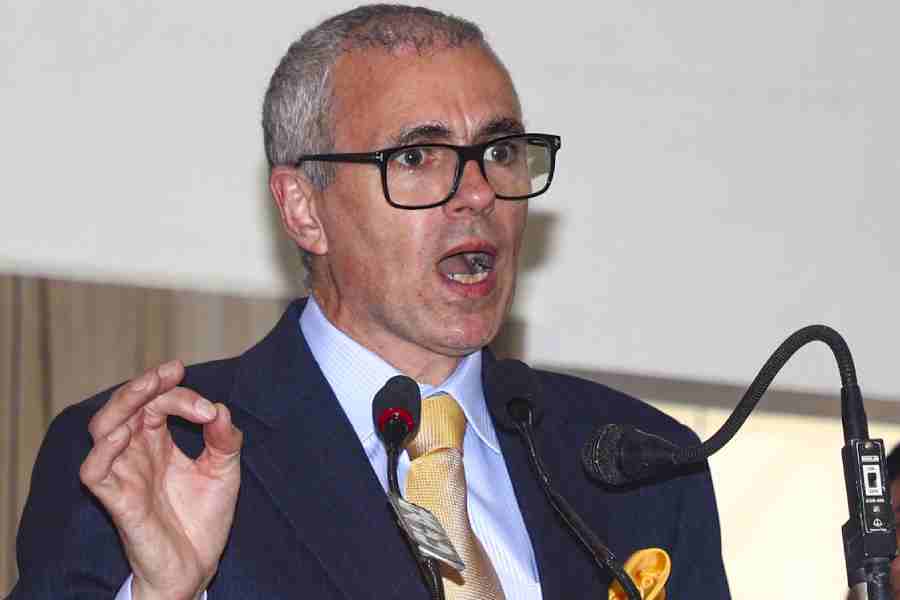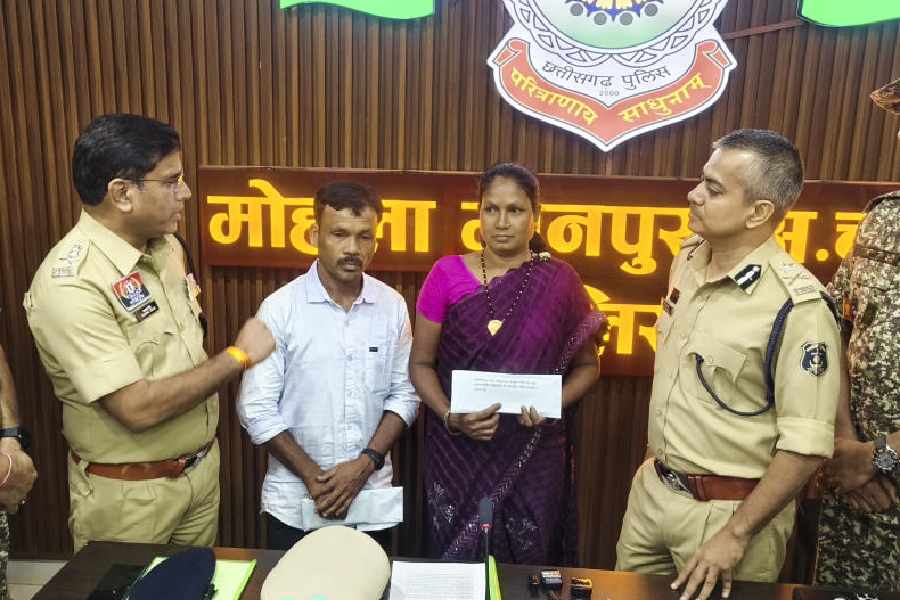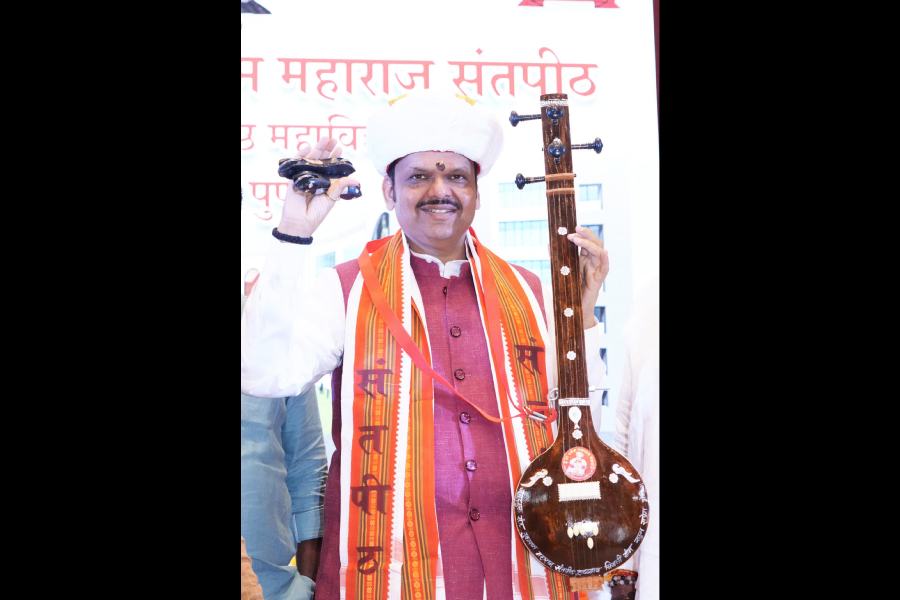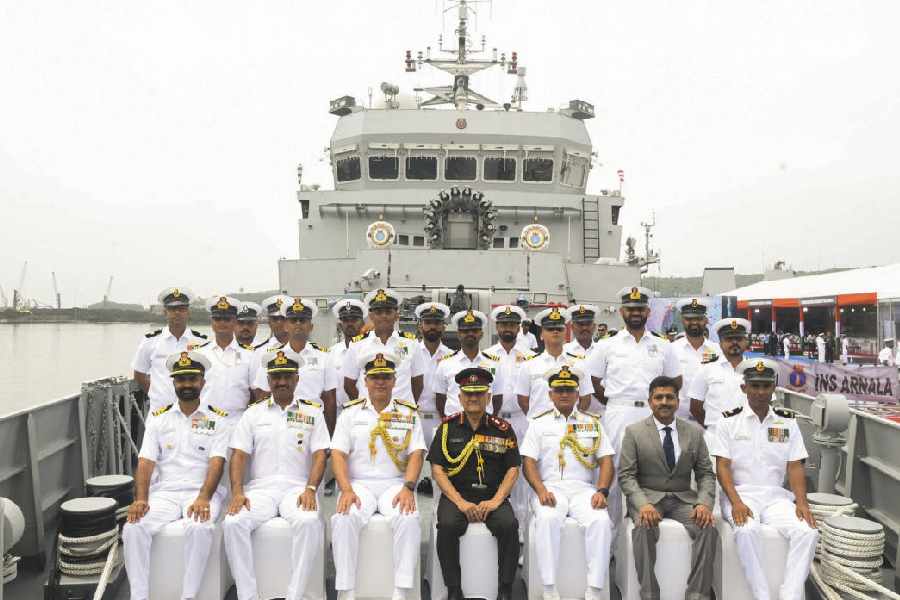
The doctor fumbles for words. He doesn't want to go back to the time - exactly a year ago - when he lay buried after buildings came crashing down on him following a severe earthquake in Nepal.
"I cannot describe what I felt then - it's difficult to put it in words. I think it was just chance that I survived the disaster," he says. His two friends - also doctors taking a break in the mountains - died in the quake.
Every time the Calcutta resident hears that someone has been pulled out alive from under the debris of a crashed flyover in Calcutta, he heaves a sigh of relief. After all, he knows that people live even after being caved in.
Two parts of the under-construction Vivekananda Road flyover collapsed in north Calcutta on Thursday, burying scores of people under the rubble. In earthquakes, landslides and avalanches, in building or bridge collapses and mine accidents, there have been numerous instances of people being buried alive.
Experts stress that all tragedies are the same and have similar effects on people. But the trauma of being engulfed by the earth is especially difficult to come to terms with, survivors stress.
Anil Sonkar, a taxi driver, was at the traffic light under the Vivekananda Road flyover when it collapsed. "Suddenly everything around me was dark and I was buried inside my car under a big concrete slab. The dust almost choked me and I could hardly breathe," he says.
He lost consciousness for an hour or so. "When I regained my senses, I struggled and opened the door and somehow managed to wriggle out of the car. I dragged myself towards a small opening to shout for help," the 25-year-old Uber driver says. He blacked out again, and when he came to, he was in a hospital and had been treated for grave injuries and a fractured wrist.
In recent times, there have been several cases of cave-ins and landslides. An avalanche in Siachen in February 2016 took the lives of 10 soldiers. Many people were killed when an entire village in the Ambegaon tehsil of Pune district was flattened by a landslide after heavy rains in July 2014.
In April 2013, a seven-storey building collapsed in Thane in Maharashtra, killing 74 people and injuring 100. In June that year, scores of people were buried in landslides after heavy rains caused floods and slides in Uttarakhand.
In June 2014, an 11-storey building in Chennai collapsed, killing 61 people, mostly construction workers. But 33 people were rescued from the site some three days after the collapse.
Pulling out people and bodies from under rubble is an equally traumatic exercise, an official of the National Disaster Response Force (NDRF) states. But NDRF personnel are fully trained in what is called a CSSR operation - collapsed structure search and rescue.
"A situation such as a bridge collapse also needs experts such as structural engineers who can assess the damage and map how we can access the trapped people and in what way," the official says. The NDRF has 10 teams comprising 400 members as part of its search and rescue teams in Calcutta.
Many of the people buried under the ground are located with the help of tools such as seismic and acoustic sensors and heart frequency detectors.
"But for those trapped inside, it is hope that can keep them alive. We have seen people coming out in a traumatised state after spending several hours under the debris or even in a state of calmness," the official says.
Prakash Rout, 30, a plumber from the Kendrapada district of Odisha, was among those pulled out alive after the building collapse in Chennai. Rout spent 72 hours under the rubble. A slab next to him saved his life, creating an air pocket that helped him breathe.
"At first I screamed and screamed but nobody heard me. Initially, because of all the noise outside, I felt that I would be rescued, but after a few hours, I started thinking that I would die, that nobody would be able to reach me," he says.
He recalls that his throat was so parched that at some point he drank his own urine.
When rescuers finally located him through their sensor equipment, he asked for water, which they piped into his mouth through a small hole.
According to some estimates, a healthy human can live without food for up to eight weeks but can't survive without water beyond three to five days. How long a person survives on water alone depends on factors such as the person's metabolism and extra fat stored in his or her body.
Rout was eventually taken out after several hours of careful drilling. "I just wanted to live and come out. I only thought about my family back home all the while," he says.
According to experts, what keeps people trapped under debris alive longer are voices and light. "When they hear noise and see light, they are hopeful that someone will come and save them. This hope, apart from grit and willpower, helps them fight the odds," says Dr George Abraham, president, Indian Institute of Emergency Medical Services (IIEMS), Kottayam.
Delhi-based psychiatrist Rajat Mitra agrees that hope - or resilience - helps people survive. "There is a sense of darkness that comes and goes when someone is buried under the rubble for a long time," Dr Mitra explains. "But after the feeling of darkness, there is an immediate feeling of resilience, which stays for a longer time. The person forms images which could be of his or her loved ones and these give hope."
Doctors point out that survivors, however, suffer from severe post traumatic stress disorders. This can take the form of acute sleeplessness or claustrophobia, says trauma expert M.C. Misra, director, All India Institute of Medical Sciences (AIIMS), New Delhi.
Dr Vivek Benegal, professor of psychiatry, National Institute of Mental Health and Neurosciences, Bangalore, stresses that the human brain reacts to stress that arises from such calamitous events in a similar way. "People suffer from nightmares and have anxiety or depressive disorders," he says. Some see a "flashback" of the tragedy when they pass those areas where the accident or incident happened, adds Dr Rajesh Sagar, professor of psychiatry at AIIMS.
Dr Sagar, however, believes that Indians cope better than many others while dealing with traumatic incidents of the kind. "Social support systems act as a buffer," he explains. In countries such as India, where social or family support systems are in place, post-traumatic stress disorder levels in affected populations are less than 10 per cent as compared to 30 per cent in developed countries, he says.
But it's not just the survivor who suffers - those whose relatives or friends are never found also undergo untold trauma. When a close kin is missing during a disaster, it triggers "abnormal" grief in some, Dr Benegal states.
"Unlike others who get over their loss over a period of time, these people find it difficult to come to terms with it. They may then reset to what psychiatrists call mummification. They will keep all belongings of the missing or dead people intact as they believe, even after a long period, the person may come back. They keep imagining that they have seen the missing person in a crowd," he says.
For the family of Lance Naik Hanamanthappa Koppad in village Betadur, in Karnataka's Dharwad district, hope and despair came together. For six days he was buried under 25 feet of snow after the avalanche hit his post in Siachen two months ago. His colleagues had died, but he was still alive when he was pulled out.
"In cold weather or in snow, a person can pull on longer as compared to hot weather conditions," reasons Dr Abraham, who, after over 25 years of emergency medicine in the US, returned to India to set up the IIEMS and its branches.
The soldier's family had almost given him up for dead when they heard that he was alive. "We thought that he had died as the Army had announced that there were no survivors, but his mother still felt that he could be alive," says his widow, Mahadevi. "We were praying that his body would be recovered. That was the most difficult time for us - when we were just waiting for the bad news," she says.
Once they came to know that he was alive, she says it was as if the whole family had been reborn. "We were overjoyed at the miracle. He inspired a whole country even in his death," she says.
Likewise, life should also be a source of inspiration. Dr Misra says that there are people who take years to recover and some never do. "But it is important for them to come to terms with the fact that nothing lasts forever."
Days after the flyover crash, Sonkar doesn't know if he will be able to drive a taxi again. "I know that I will never go on or under a flyover ever again as long as I live," he says.
The trauma never goes away, stresses the Calcutta doctor - who does not want to be identified. "I will have to live with the trauma, but that doesn't mean I will stop travelling to the mountains with friends," he says. "Life doesn't stop."
Additional reporting by Sonia Sarkar and Smitha Verma in New Delhi










